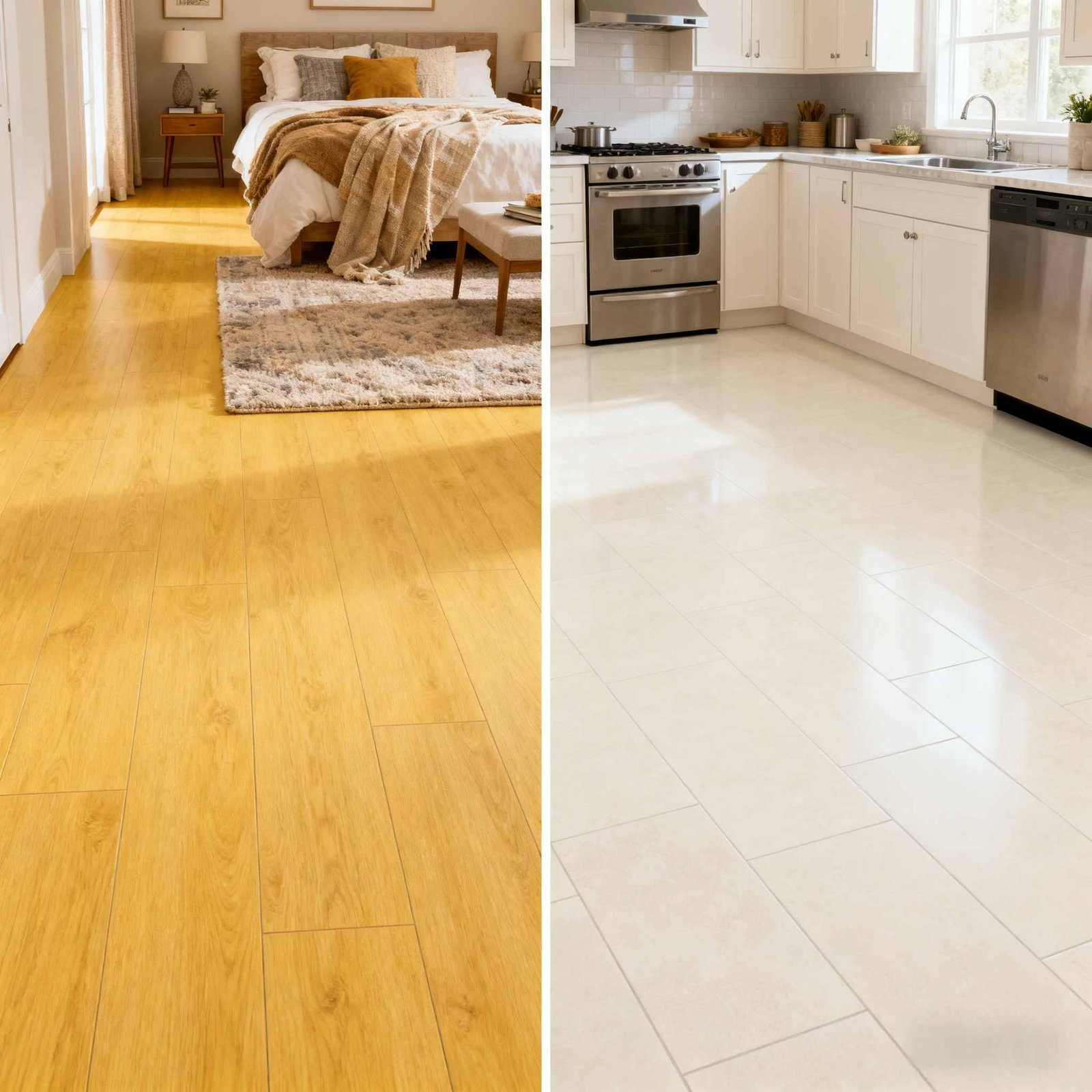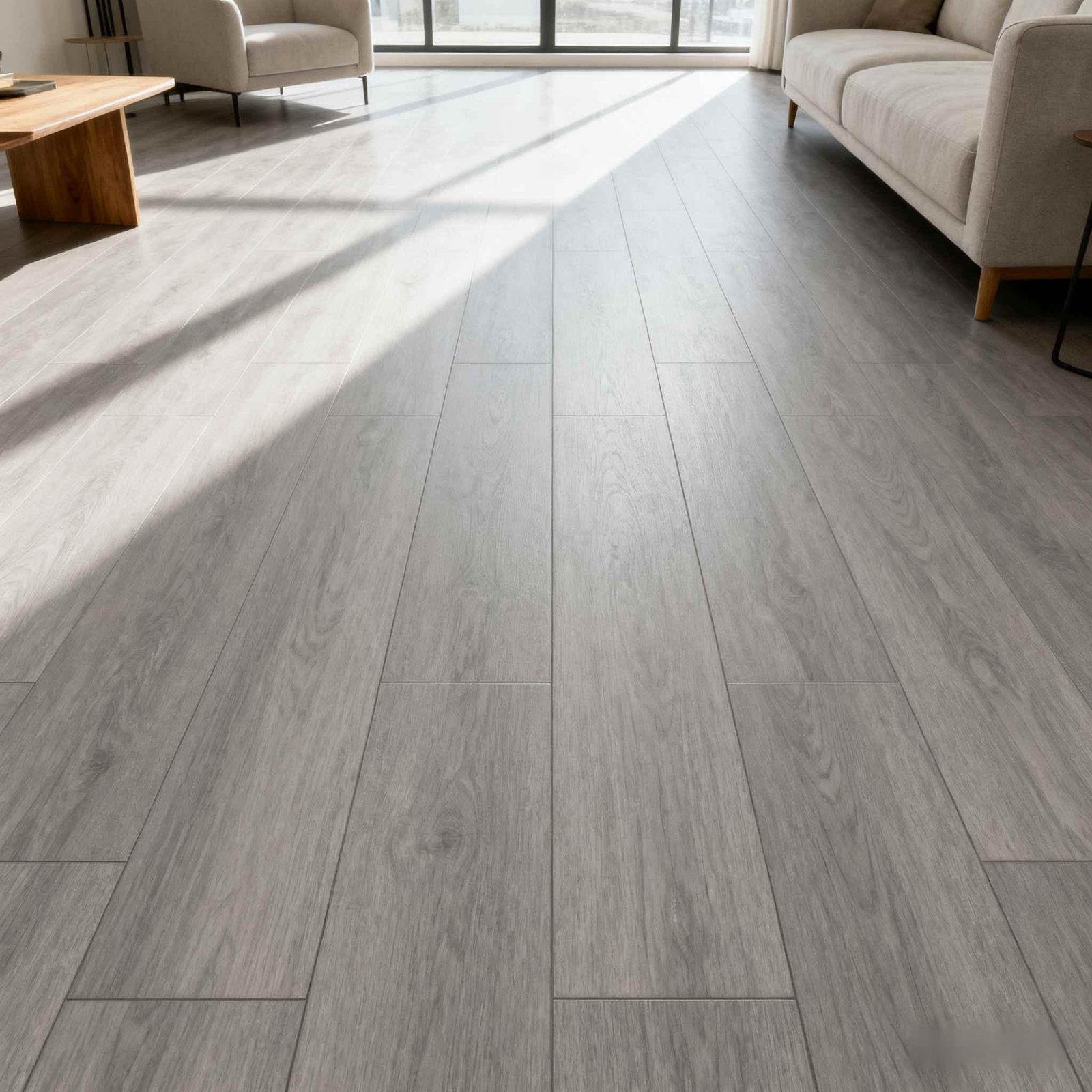
So, you’re flipping through flooring options, maybe knee-deep in a home makeover or just dreaming of a fresh look for your space. SPC flooring keeps popping up, right? It’s got a lot of buzz, and it’s not hard to see why—it’s tough, practical, and won’t drain your wallet. But let’s ditch the sales pitch and get real. I’m here to break down the good and the not-so-good of SPC flooring, so you can figure out if it’s your vibe before you commit. We’ll cover what it is, why it’s a hit, where it falls short, and toss in some real-life tips from folks who’ve walked on it. Stick with me—this is the straight-up, no-fluff guide to avoid that “wish I’d known” moment.
What Exactly is SPC Flooring?
Let’s start simple. SPC stands for Stone Plastic Composite. It’s like vinyl flooring’s tougher cousin, with a rock-solid core that sets it apart. At its core—pun intended—it’s a mix of limestone powder (that’s the “stone”), PVC resins, and stabilizers. These get mashed together under heat and pressure to form a rigid board. Then, they slap on a decorative film that looks like wood, stone, or whatever style you’re into. A wear layer—usually 0.2 to 0.7mm thick—sits on top to fend off scratches and stains, and often there’s a UV coating to keep it from fading in sunlight.
The setup is pretty clear: UV coating, wear layer, decor film, SPC core, and sometimes a cushy backing like IXPE or EVA foam to cut down noise. No glue’s used, which keeps it eco-friendly and free of formaldehyde. I was chatting with a contractor pal who’s all about SPC for basements. He called it a cross between laminate and luxury vinyl—only way sturdier.
Unlike hardwood that warps when it’s humid or laminate that puffs up after a spill, SPC flooring is built for real life. It’s 100% waterproof, so it shrugs off leaks in kitchens or bathrooms. It’s slim, ranging from 4mm to 6.5mm thick, so you can lay it over existing floors without messing with door heights. Plus, it’s got click-lock systems like Unilin or Valinge. You just snap it together like puzzle pieces. No mess, no stress.
The Pros of SPC Flooring: Why It’s a Crowd-Pleaser

Alright, let’s dive into why SPC flooring is winning fans left and right. It’s got a lot going for it, especially if you want a floor that’s easy to live with and looks good. Here’s the rundown:
Built to Last: This stuff is tough as nails. The rigid core handles heavy foot traffic, pet scratches, or even a dropped skillet without a dent. That wear layer fights off scratches, making it a dream for homes with kids who drag toys around. Industry tests give it AC3 or higher abrasion ratings, so it stays fresh-looking for years, even in busy spots.
Laughs at Water: Spill a drink? No biggie. SPC doesn’t swell or buckle when wet. A buddy of mine had a washer overflow in his laundry room—the SPC floor was fine, no damage at all. It’s perfect for basements, bathrooms, or any spot where moisture’s a concern.
Easy to Put Down and Keep Clean: You click it in, and you’re done. No need for extra underlayment in most cases, and it floats over subfloors like concrete or tile. Cleaning’s a breeze—just a damp mop and some mild soap. No waxing or refinishing. And it’s got anti-slip grip, especially when wet, which is great for homes with little ones or older folks.
Green and Safe: Made from virgin PVC and calcium powder, it’s free of nasty chemicals like formaldehyde (E0 rating), phthalates, or heavy metals. It’s recyclable, too. Plus, it’s fire-retardant—it puts itself out in seconds if flames touch it, giving you extra peace of mind.
Looks Fancy, Costs Less: You get realistic wood grains, marble patterns, or herringbone designs—tons of choices. It mimics pricey materials without the hefty bill. Think $2-5 per square foot installed, compared to $10+ for real hardwood. With backings like IXPE, it also quiets down footsteps, making upstairs rooms less echoey.
Here’s a quick table to sum it up:
Pro Why It’s Great Real-Life Example
Tough as Heck Takes a beating and looks good Kid’s playroom handles daily chaos
Waterproof Spills and floods? No problem Kitchen accidents don’t ruin it
Simple Setup DIY-friendly click system Weekend project, no pros needed
Low Upkeep Wipe it, done Busy parents love the ease
Budget-Friendly Style Looks high-end, costs less Get that luxury vibe on a dime
If you live in a humid area or have a lively household, these perks make SPC a slam dunk. But, like anything, it’s not perfect. Let’s flip it over and talk downsides.
The Cons of SPC Flooring: The Stuff You Need to Know
No floor’s flawless, and SPC’s got some quirks that might bug you, depending on your setup. Let’s keep it honest and lay it out.
Feels Firm Underfoot: That rigid core is great for strength, but it can feel hard compared to soft carpet or cushier vinyl. Without thick foam backing, standing for hours in the kitchen might tire you out. A contractor I know suggested extra padding to soften it, but that’s more work.
Tough to Fix: If a plank gets a deep gouge, you can’t sand it down like wood. You’ll likely need to swap out the damaged piece, which means popping out a section. It’s doable but a pain if damage is frequent.
Picky About Temperature: Before installing, SPC needs to sit in the room to adjust to the temperature. If not, it might expand or shrink oddly later. In cold climates, it can feel chilly, though it plays nice with underfloor heating if you’ve got it.
Not Super Green at the End: The production is eco-conscious, but PVC doesn’t break down naturally. Recycling’s an option, but it’s not always easy to find. Some folks worry about off-gassing, though certified SPC with FloorScore or CE ratings keeps VOCs super low.
Texture’s Not Quite Wood: It looks like hardwood or stone, but the embossing might not feel as “real” to the touch. If you’re picky about texture, it might not hit the mark.
One thing I’ve heard from homeowners: in big, open rooms without foam backing, SPC can sound a bit hollow when you walk. Not a huge deal, but if you’re after a super quiet space, it’s something to think about.
These cons aren’t deal-breakers with the right planning. If you’ve got a wet, high-traffic area, the pros usually outweigh the quirks. But if you’re chasing cozy vibes or natural textures, you might want to explore other options.
When Should You Choose SPC Flooring?

Imagine you’re fixing up a rental where you can’t rip out existing floors—SPC goes right over old tile, quick and reversible. Or maybe your basement gets soggy every spring; that waterproof core is a lifesaver. Flooring pros say SPC can last 15-25 years in homes, outshining laminate in damp spots.
But if your home’s all about warm, cozy vibes or you’re banking on natural materials for resale value, hardwood might steal the show. I helped a neighbor pick SPC for their home gym—they loved how it handled heavy weights—but for their living room, they went with softer engineered wood for that plush feel. It’s all about what fits your life.
Meet Lanhe Flooring: Your Go-To SPC Supplier
Before we wrap, let’s talk about Lanhe Flooring. Based in Shandong, China, they’re a powerhouse in making and exporting SPC flooring. Their setup is slick—fully automated production lines handle everything from mixing raw materials to packing finished planks on sturdy pallets. They offer customizable thicknesses, wear layers, and patterns like wood grains or marbles, all backed by certifications like ISO9001 and FloorScore for safety and quality. Their floors ship worldwide—North America, Europe, Australia, Southeast Asia—and they’ve earned a solid rep for reliability. If you’re after SPC that’s durable, green, and budget-friendly, Lanhe’s a name to know.
Conclusion
So, there you have it—SPC flooring’s pros and cons laid bare. It’s a rock-solid choice for modern homes, shining in toughness and ease, though it might not be the coziest underfoot. If you need a floor that handles spills, scuffs, and chaos without a fuss, SPC’s got your back. Just weigh your needs, and you’ll find the perfect fit for your space.
Frequently Asked Questions About SPC Flooring Pros and Cons
What makes SPC flooring a win for busy homes?
SPC flooring’s a champ at handling chaos. It’s super tough, shrugs off scratches from kids or pets, and wipes clean after spills. The click-lock system makes it a quick DIY job, saving you time and stress.
Are there any downsides to SPC flooring I should watch for?
Yep, it can feel a bit stiff underfoot, so it’s not as comfy as carpet for long standing. Also, if a plank gets damaged, you can’t refinish it—you’ll need to replace it, which takes some effort.
How does SPC flooring stack up against laminate in terms of pros and cons?
SPC’s got better waterproofing and stays stable in humid spots, which is a big pro. But laminate might feel warmer and cost less upfront. On the con side, SPC can be noisy without padding, while laminate swells easier with water.
Is SPC flooring worth the cons for most homes?
For sure, if you value low upkeep and long-lasting performance. The pros—like water resistance and durability—often outshine the cons, like its firm feel, especially in kitchens or bathrooms.
Can I tackle SPC flooring installation myself, considering its pros and cons?
You bet. The pro of its easy click system makes DIY a breeze—no glue or nails needed. But a con: your subfloor needs to be flat, or the planks might not lock right. Grab a level and some YouTube tutorials, and you’re set.


